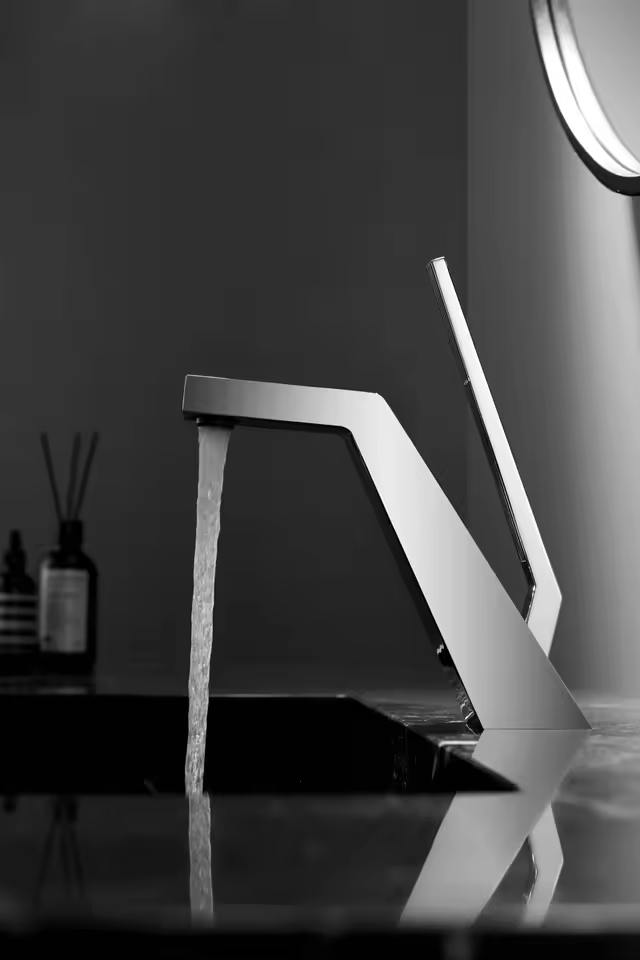Common Signs of a Clogged Bathroom Sink Drain
Clogged bathroom sink drains can disrupt your daily routine. Recognizing warning signs early is crucial. So how to clean bathroom sink drain?
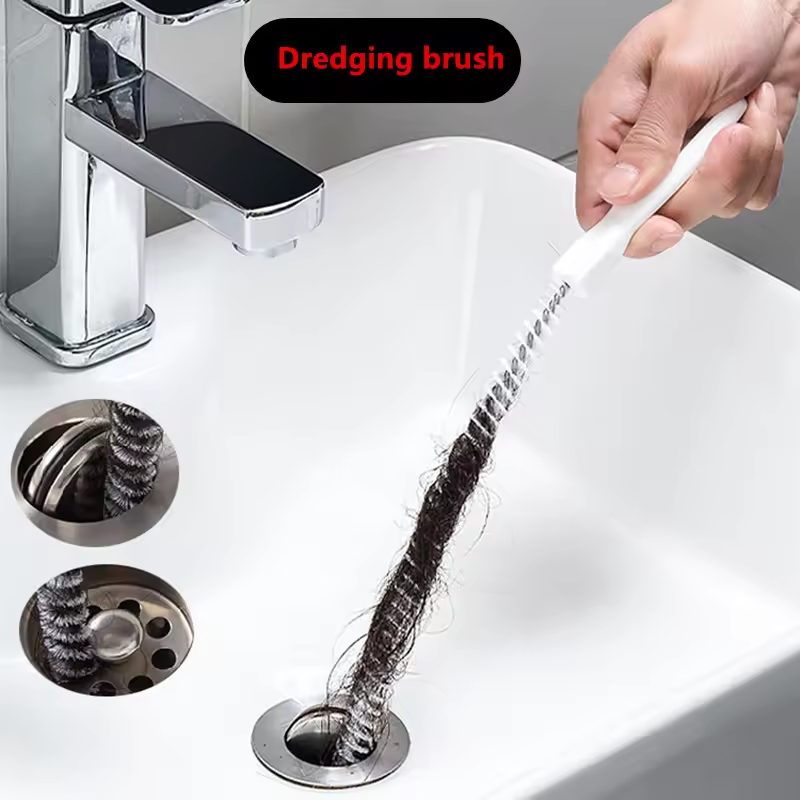
Slow Draining Water
One of the most obvious signs is slow draining water. If water pools in the sink or takes too long to flow out, it indicates a blockage. This can happen due to hair, soap scum, or debris building up inside the drain over time. Addressing it promptly can prevent a complete clog.
Unpleasant Odors or Gurgling Sounds
Foul smells coming from your sink drain are another red flag. These odors typically result from trapped organic matter like food residues, hair, or grease decomposing in the drain. Additionally, gurgling sounds may occur when air struggles to flow through a partially clogged pipe. These noises often signal a developing blockage requiring attention.
Spotting these signs early can help you take action before the clog worsens. Regular maintenance can also reduce the recurrence of such issues.
Tools and Materials Needed for Cleaning a Sink Drain
Having the right tools and materials ensures effective and hassle-free drain cleaning. Below, we cover the essentials needed.
Essential Tools for the Job
- Plunger: Useful for removing minor clogs using suction power.
- Drain Snake or Auger: Helps in clearing stubborn blockages deep within the drain.
- Bucket or Bowl: Captures water or debris during cleaning.
- Gloves: Protects your hands while handling debris or cleaning solutions.
- Screwdriver or Pliers: Assists in removing drain covers or stoppers.
- Pipe Brush: Cleans the drain walls effectively.
These tools simplify the process and are widely available in stores.
Common Cleaning Agents and Their Effectiveness
- Boiling Water: Ideal for dissolving minor grease or soap scum build-up.
- Baking Soda and Vinegar: Natural and eco-friendly mix for breaking down organic matter.
- Dish Soap: Works well when combined with hot water to dissolve grease.
- Chemical Drain Cleaners: Extremely effective but should only be used sparingly to protect your pipes.
- Enzyme-Based Cleaners: Safe for regular use and effective on organic clogs.
- Hydrogen Peroxide: Helps disinfect and break down mild debris clogs.
Using these cleaning agents appropriately ensures a clean and functional bathroom sink drain. Choose options based on clog severity and environmental concerns.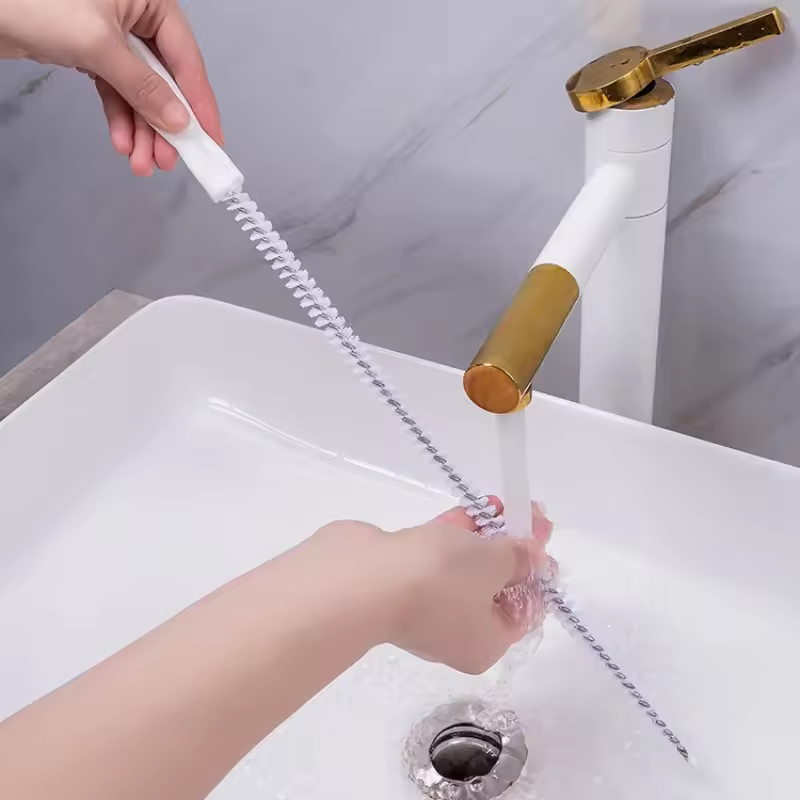
Preparing the Sink Drain for Cleaning
Before starting, it’s essential to prepare the bathroom sink drain for cleaning. Proper preparation makes cleaning easier and ensures better results.
Removing Sink Stopper or Drain Cover
- Locate the Stopper or Cover: Find the drain stopper or cover. It is usually at the center of the sink.
- Inspect for Push-Pull Mechanism: Some stoppers lift with a simple push or pull action. Check if this applies.
- Use Tools if Needed: Use a screwdriver or pliers to remove tightly secured drain covers.
- Place Cover Safely Aside: Once removed, set the stopper or cover aside to avoid loss or damage.
- Wear Gloves: Put on gloves before touching debris inside the drain.
Removing the stopper or drain cover provides direct access to the clog. This step simplifies the cleaning process significantly.
Initial Cleaning Steps to Loosen Debris
- Remove Visible Debris: Pull out hair or other debris stuck near the surface of the drain.
- Flush with Hot Water: Slowly pour hot water into the drain to loosen soap scum and minor debris.
- Use a Pipe Brush: Scrub inside the drain opening using a pipe brush to dislodge stubborn substances.
- Inspect the Drain: Shine a flashlight to check for deeper blockages before moving to the next steps.
Performing these initial cleaning steps minimizes clog severity and sets the foundation for thorough cleaning. Proper preparation keeps your bathroom sink drain functional and clean.
Step-by-Step Guide to Cleaning a Bathroom Sink Drain
Cleaning a bathroom sink drain effectively involves simple yet systematic steps. Follow these methods to achieve the best results.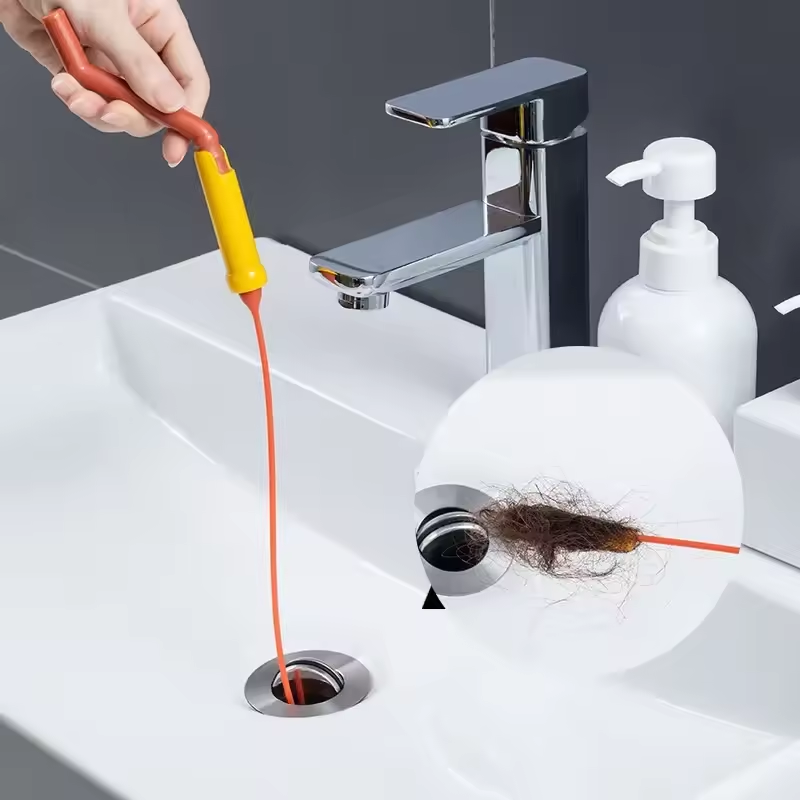
Using Boiling Water to Clear Minor Blockages
- Heat Water to Boiling: Boil a kettle or pot of water until it’s hot.
- Pour Slowly Into the Drain: Gradually pour the boiling water into the clogged drain.
- Repeat if Necessary: Perform this step 2-3 times for tougher soap scum or grease deposits.
Boiling water can dissolve light blockages like grease or soap buildup quickly.
Employing Baking Soda and Vinegar for Effective Cleaning
- Add Baking Soda: Pour about half a cup of baking soda into the drain opening.
- Follow with Vinegar: Add half a cup of vinegar immediately after the baking soda.
- Leave for 15 Minutes: Let the mixture fizz and break down debris.
- Flush with Hot Water: Pour hot water into the sink to wash out loosened materials.
This natural solution is ideal for breaking down organic clogs safely.
Unclogging with a Plunger or Drain Snake
- Seal the Overflow Hole: Block the overflow hole of the sink with a wet towel.
- Position the Plunger: Place the plunger firmly over the drain opening.
- Push and Pull: Pump the plunger vigorously to dislodge clogs.
- Use a Drain Snake: Insert the drain snake into the pipe for deeper blockages.
- Rotate and Pull: Twist the snake and carefully pull out debris blocking the drain.
These tools handle stubborn clogs more effectively than hot water or solutions.
Using Chemical Drain Cleaners: Pros and Cons
- Read Instructions: Follow the manufacturer’s guide on how to use chemical cleaners.
- Apply Safely: Pour the cleaner carefully into the drain as directed.
- Wait for Results: Let the chemical sit for the recommended time.
- Flush with Water: Rinse the drain with cold water to clear out dissolved debris.
Pros: These cleaners are strong and work quickly on tough clogs.
Cons: Overuse can damage pipes, and they are less eco-friendly than natural solutions.
These step-by-step methods cover a range of cleaning needs to restore your sink’s functionality.
Preventive Maintenance Tips for a Clean Sink Drain
Keeping your bathroom sink drain clean helps prevent clogs and unpleasant odors. Regular maintenance is key.
Regular Flushing with Boiling Water
- Boil Water Weekly: Heat water until boiling to flush the drain regularly.
- Pour Slowly: Pour boiling water steadily into the drain.
- Repeat If Needed: Perform this step 1-2 times weekly to dissolve minor buildup.
Boiling water prevents grease, soap scum, and debris from collecting in the drain.
Minimizing Hair and Soap Build-up
- Brush Hair Away First: Avoid washing hair directly over the sink to reduce buildup.
- Use Liquid Soap: Replace bar soap with liquid options to reduce soap residue.
- Wipe the Sink Regularly: Clean the sink surface often to prevent debris from accumulating near the drain.
These practices reduce common blockages and extend drain cleanliness.
Using Drain Covers or Strainers
- Install Strainers: Place drain covers or mesh strainers over the drain.
- Remove Debris Daily: Clean the strainer daily to keep objects out of the pipe.
- Ensure Proper Fit: Choose covers that fit securely over your drain opening.
Drain covers keep hair, dirt, and foreign objects from entering the sink drain.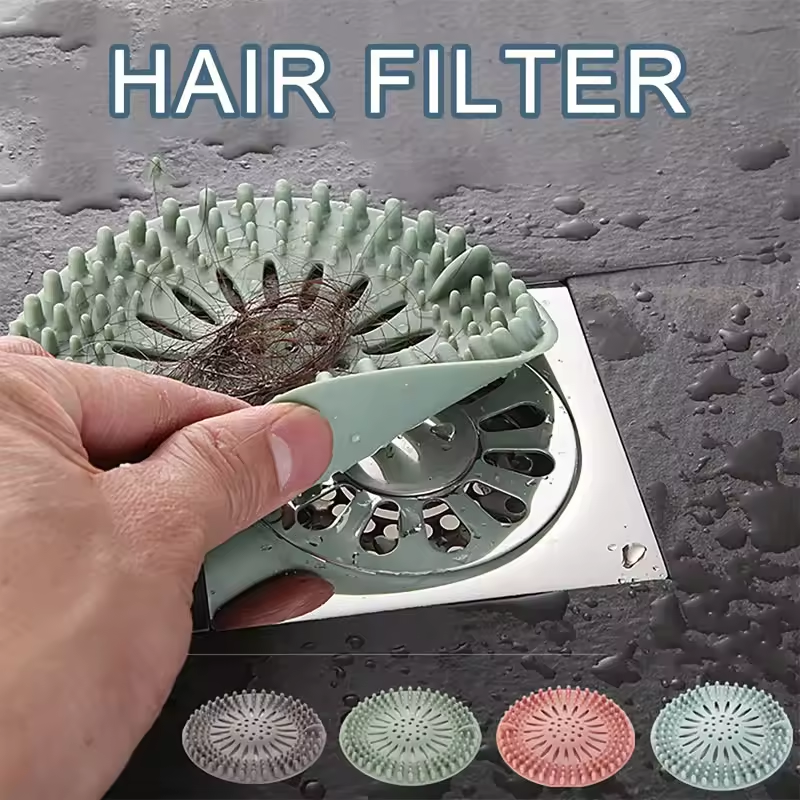
When to Call a Professional Plumber
Knowing when to call a professional plumber is important to avoid further complications. While DIY cleaning methods work for minor clogs, some issues demand expert attention.
Recognizing Persistent or Severe Drain Problems
- Water Still Drains Slowly: After multiple cleaning attempts, slow drainage suggests deeper blockages need specialized tools.
- Recurring Clogs: Frequent clogs indicate underlying problems like damaged pipes or stubborn blockages.
- Standing Water in Sink: If water remains stagnant despite treatments, it points to a serious obstruction.
- Multiple Fixtures Are Clogged: When multiple sinks or drains show issues, you may have a system-wide plumbing problem.
- Sewage Backup: Foul odors or dirty water flowing back highlight major drainage system issues.
Calling a professional ensures these complex problems are diagnosed and resolved correctly.
Risks of DIY Fixes for Complex Issues
- Pipe Damage: Overusing plungers or chemical cleaners risks damaging pipe integrity.
- Worsening the Problem: Using improper tools can push debris deeper, causing complete blockages.
- Potential Injuries: Handling sharp drain tools or corrosive cleaners increases the risk of injury.
- Hidden Issues: Structural issues like pipe corrosion or tree root intrusion often go unnoticed without proper equipment.
For safety and effective solutions, rely on professional plumbers for severe or persistent problems.
Eco-Friendly and Safe Cleaning Alternatives
Cleaning your bathroom sink drain doesn’t have to harm the environment. By using eco-friendly alternatives, you can effectively remove clogs while keeping your home safe.
Homemade Drain Cleaning Solutions
- Baking Soda and Vinegar: Pour half a cup of baking soda into the drain. Follow it with half a cup of vinegar. Let the mixture sit for 15 minutes. Afterward, flush the drain with hot water to clear debris. This solution is natural and works for organic clogs.
- Salt and Baking Soda: Mix half a cup of salt and baking soda. Pour the mixture into the drain. Follow with hot water after 30 minutes. This method breaks down grease without using chemicals.
- Lemon Juice and Vinegar: Combine equal parts lemon juice and vinegar. Pour the mixture into the clogged drain. Let it sit for 20 minutes, then flush with hot water. This also leaves a pleasant citrus smell behind.
- Boiling Water: Boil water and carefully pour it into the drain. Repeat the process if needed. It is simple and perfect for minor soap or grease build-ups.
Homemade solutions avoid harmful chemicals, providing an effective and safe alternative for drain cleaning.
Tips for Reducing Environmental Impact
- Avoid Overusing Chemical Cleaners: Switch to natural solutions to minimize chemical residues in water systems.
- Use Biodegradable Products: Opt for enzyme-based cleaners that are eco-friendly and break down organic materials safely.
- Limit Water Waste: Use just enough water for cleaning and flushing to reduce waste.
- Dispose of Debris Properly: Remove debris manually and dispose of it in the trash instead of rinsing it down.
- Install Drain Strainers: Prevent clogs and reduce the need for frequent cleaning by using strainers.
These eco-conscious tips not only help the planet but also ensure long-term drain health. Using natural ingredients and proper methods keeps drains clean without harming the environment.
FAQs About Cleaning Bathroom Sink Drains
How Often Should You Clean a Bathroom Sink Drain?
You should clean your bathroom sink drain every month. Regular cleaning prevents clogs and odor buildup. For heavy usage, consider cleaning every two weeks for optimal performance. Flush the drain with boiling water weekly to remove minor debris. Using eco-friendly solutions like baking soda and vinegar helps maintain cleanliness over time. Install a drain cover to reduce hair and soap buildup, minimizing the need for frequent cleaning.
Can Over-The-Counter Drain Cleaners Damage Pipes?
Yes, over-the-counter drain cleaners can damage pipes if used too often. These chemical cleaners are strong and corrosive. Frequent use can erode metal or PVC pipes over time. Heat generated by the chemicals might weaken older pipes or cause leaks. Instead, use natural options like baking soda and vinegar for mild clogs. If chemicals must be used, read the instructions carefully and restrict usage to severe blockages. Always flush the cleaner thoroughly to minimize residue effects on your pipes.
